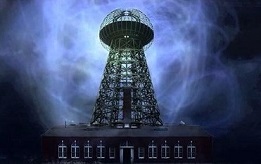Hello,
Remember the Water-Based Long-Running Device ? It worked continuously for 2 years until the Zinc plate corroded but if I replace the plate it could work again for another 2 years.
Its only inconveniences were:
- The water needed to be replenished at every few weeks because of the natural phenomenon of water evaporation;
- Altough the copper mesh was not affected by water corrosion (as normally should happen), the zinc plate was slowly corroded and needs to be replaced after about two years.
Well, seems there is possible to replace the water with a solid-state material which will resolve the two inconveniences specified above.
The solution is a polymer named Polyethylene Glycol (PEG). As you can read here:
Although not yet in commercial production, many groups around the globe are engaged in research on solid polymer electrolytes involving PEG, with the aim of improving their properties, and in permitting their use in batteries, electro-chromic display systems, and other products in the future.
But as Joel Lagace discovered, it can be also used for building its device he named Quantum Power Cell which is providing low-current but constant electricity.
More specific Joel used Polyethylene Glycol (PEG) 3350 which is used in some pharmaceutical products. He used PEG 3350 from Relaxa but there are similar products made by other companies.
Theoretically the device should work forever without maintenance because after the preparation PEG 3350 becomes solid and there should not be any corrosion/degradation effect on the anode and cathode made from carbon felt. But this could only be verified by running the cell for a long time.
Altough the device is experimental it can keep a LED on permanently and provide enough current to power a Joule-Thief or a very small electrical motor.
Joel says that more current can be provided by moving the anode and cathode as close as possible to each other so the output of the device could become higher.
Here is how the solid-state PEG 3350 is prepared and placed in the cell:
And here are some demonstrations on what the cell can do even if it's in a early stage (see the anodes and cathodes are not that close to each other):
Joel is estimating that many of these cells put together could power a LED light bulb for about 20 minutes through some capacitors then they need some time to recharge again.
Of course I see no problem in scaling up this cell (more PEG 3350, bigger anode and cathode) so it can provide more power.
And here is a self-charging demonstration using a small electrical motor as load:
I intend to build one of these quantum cells as a side project. I'm interested to check if there is any degradation of the PEG 3350, anode or cathode when the cell is running a long time with a load.
If there is no degradation that means the cell can be an alternative to Melnichenko's/Akula's eternal flashlight. But that remains to be verified in time.
As this device have no input it's obviously overunity so I added the "Beyond-Unity" tag to it.
Regards,
Fighter
| "If you want to find the secrets of the universe, think in terms of energy, frequency and vibration." | ||
| Nikola Tesla | ||


